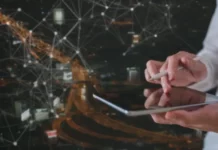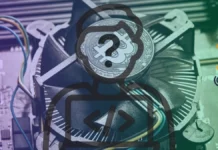In an era defined by digital connectivity, cybersecurity has emerged as one of the most pressing concerns for individuals and organizations alike. Recent trends in cyber threats have revealed a shifting landscape characterized by increased sophistication in ransom attacks, the growing influence of quantum computing, and the integration of artificial intelligence (AI) into cybercrime strategies. As these threats evolve, the imperative to assess and mitigate risks becomes paramount.
To navigate this perilous digital realm, individuals and organizations must first embark on a comprehensive risk assessment. Identifying vulnerabilities and estimating the potential impact of a cyber-attack are fundamental steps in developing a robust cybersecurity strategy. Security policies should be established, and employees should be trained in recognizing and responding to threats effectively. Implementing security measures like firewalls and intrusion detection systems fortify defenses, while regular data encryption and backup routines safeguard sensitive information. Keeping software and patches up to date is a proactive measure that prevents vulnerabilities from being exploited.
After the cyber-attach against MGM Resorts in Las Vegas resulted in a significant IT outage, where hackers demanded a ransom we spoke with the founder of The Crypto Merchant a recognized expert in cryptocurrency security. Mark offers some valuable insights into these pressing issues.
CoinChapter: What are some recent trends in cyber threats, and how are they evolving?
Mark: Cyber threats are ever-evolving but now we have an increase in more sophisticated ransom attacks, the rise of quantum computing and the use of AI in cybercrime
CoinChapter: How can individuals and organizations assess and mitigate the risks associated with cyber threats?
Mark: The first thing to do is a risk assessment and identify vulnerabilities along with the possible impact of a potential attack. Then, certainly, organizations should develop some security policies, train employees (in how to respond to an attack, for instance) Install firewalls, intrusion detection, and any other security measures. Encrypt Data and constantly back up data, also keep patches and software to date.
CoinChapter: What practical steps can one take to secure personal digital assets, especially cryptocurrencies? Are there specific cybersecurity strategies that can protect sensitive information from cyber threats?
Mark: Secure digital assets with a cold wallet. They are secure, inexpensive, and relatively easy to use. Maintain multiple wallets. Use secure passwords and seed phases. Keep your private keys separate!
CoinChapter: What distinguishes a cold wallet from a hot wallet, and why is it essential for cybersecurity?
Mark: A hot wallet is a software-based cryptocurrency wallet that is connected to the internet and allows users to access their digital assets quickly and easily. In contrast, a cold wallet is a hardware device that stores cryptocurrency offline, making it less vulnerable to hacking and cyber-attacks. The primary difference between the two is that hot wallets are more convenient to use but less secure, while cold wallets are more secure but less convenient.
CoinChapter: Can you explain the concept of offline storage for private keys and its role in enhancing security?
Mark: Offline storage for private keys is a security measure that involves keeping the keys physically disconnected from the internet. This practice helps protect the keys from being compromised by online threats such as hacking or theft
CoinChapter: Are there any best practices for securely managing and storing cryptocurrency private keys?
Mark: Keeping the keys offline is the general advice, but a lot of people will simply write them on a piece of paper. I would suggest a seed phase backup device, something like a steel plate that you stamp, inscribe, or otherwise “print” the keys onto. They are water, dust, and fireproof!
CoinChapter: How can individuals stay informed about emerging cyber threats and security measures?
Mark: Subscribe to cyber security news sources, join communities, follow experts, or even enroll in a cyber security course.
CoinChapter: What are the potential consequences of neglecting cybersecurity when dealing with personal digital assets?
Mark: Neglecting security can result in any number of things, so consider just these few – Reputation damage, Malware infections, loss of privacy, Data breaches, and of course, identity theft – most of these could also result in financial loss.
CoinChapter: Are there any upcoming technologies or trends that could impact cybersecurity in the near future?
Mark: Emerging technologies and trends are expected to have a significant impact on cybersecurity in the near future. These are just a few examples of how emerging technologies and trends could impact cybersecurity in the near future. It’s important for individuals and organizations to stay informed about these developments to adapt their security measures accordingly.
Supply chain risk: Supply chain risk has been identified as one of the biggest cybersecurity trends.
Ensuring the security of the entire supply chain is becoming increasingly important as organizations rely on third-party vendors and suppliers.
This trend requires robust security measures to protect sensitive data from unauthorized access.
Striking the right balance between privacy and regulation will be crucial for shaping the future of cybersecurity.
In summary, as cyber threats evolve and cybersecurity remains a top concern, individuals and organizations must remain proactive, informed, and adaptable to navigate this complex and dynamic digital terrain.
The post Navigating the Digital Frontier: Cybersecurity Trends, Strategies, and Future Outlook appeared first on CoinChapter.



